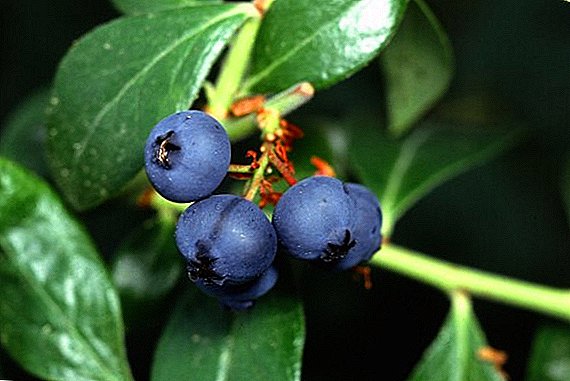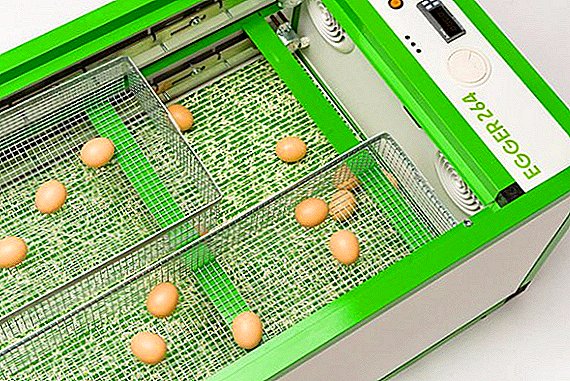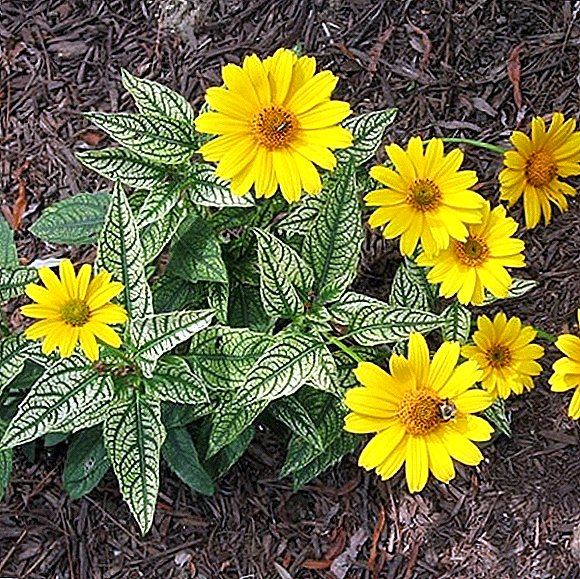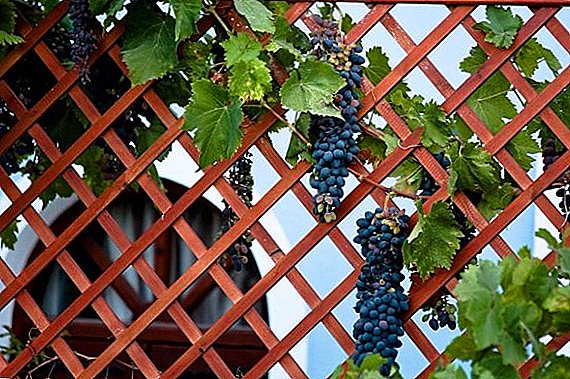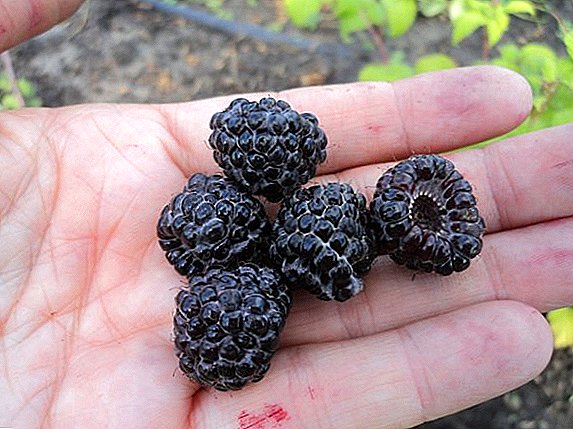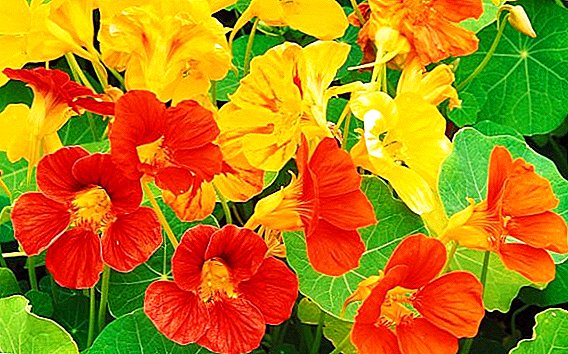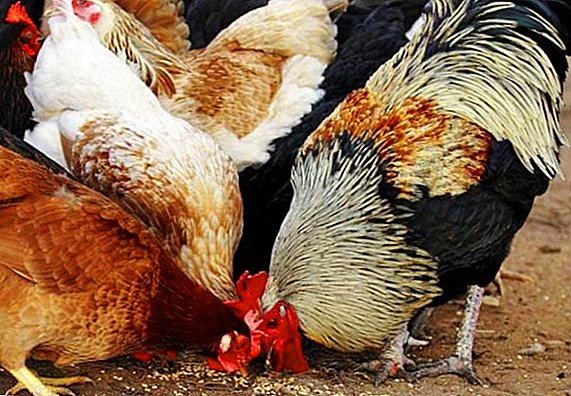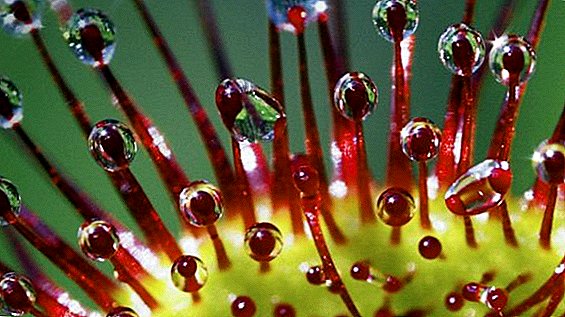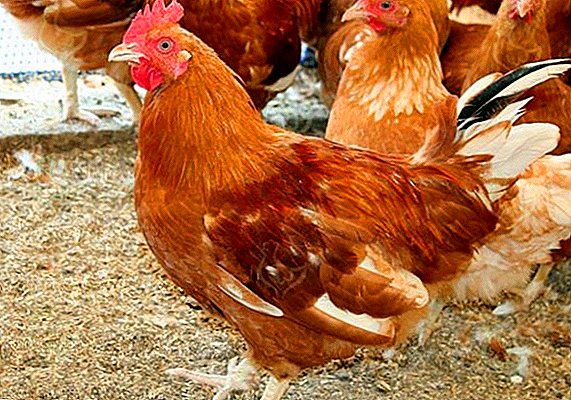 On the plot, they prefer to breed chickens for universal use.
On the plot, they prefer to breed chickens for universal use.
Today there are many different breeds of meat and egg direction.
One of the most popular in Europe is the breed of hens of English selection red-tailed.
Consider it closer.
Breed description
English breeders to get chickens red-tailed crossed chickens of Plymouth, New Hampshire and White Sorrey breeds. Their goal was to obtain meat and egg chicken with high productive performance. 
Despite the fact that it is already a recognized breed, breeding work on it continues. It is a carrier of the “goldenness” gene, which makes it possible to determine their gender by color in the first days of a chick’s life.
Did you know? The rooster is needed for chicken society not just for breeding. He has a very important social role: he wakes chickens and calls for food, resolves conflict situations and protects against attacks by small predators.
Breed productivity
Males of the Red-Tailed breed usually reach a weight of about 4 kg, and females - 3-3.5 kg. And they quickly ripen and gain weight. Their meat can be used for cooking different dishes, it is of good quality, not tough, as often happens with egg breeds.
At the same time, the hens are capable of giving an average of 180 eggs weighing about 60 g per year.
The survival rate of chicks is 89%, and adult birds - 79%. 
External signs
Representatives of chickens of this breed have an ordinary appearance.
Although they have their own features:
- a broad and somewhat short rounded body with a broad chest;
- average neck length;
- the head is of medium size, with a leaf-shaped comb and earrings of pink-red tones;
- earlobes bright white or yellow;
- strong paws of white or yellow color;
- the main color of the feather cover has red-brown or fiery-red tones; on the tail and at the ends of the wings are feathers of white color, but specimens with atypical colors are subject to rejection.
Males are taller and larger than females, they look more graceful. 
Character
Temper chickens calm, non-conflict. These phlegmatic people like peace and do not create problems. Males of red-tailed do not make excessive noise and do not fight, caring for females.
Did you know? The expression "chicken brains" is not true. Chickens are well trained, recognize the host and memorize up to 100 faces. They know how to count, they have a developed sense of time.
Puberty and egg production
Females reach puberty and begin to race at the age of six months. They have a good egg production - 150-180 eggs of light brown color per year. In the fourth year of life, the hens practically cease to be carried, therefore the livestock must be periodically updated.
Learn how to increase egg production in chickens in winter, what vitamins to give to chickens to increase egg production.
Chickens, most likely, will have to be hatched themselves, with the help of an incubator, as the red-tailed chickens hatch eggs poorly. If there are other layers with a good instinct for brooding, then eggs can be laid under them. 
Positive and negative qualities of the breed
Chickens of this breed are distinguished by the following positive qualities:
- ripen quickly;
- resistant to many diseases;
- unpretentious to the conditions of detention and feed;
- they are highly productive;
- have a calm temper.
Negative qualities include:
- the absence of the incubation instinct in the hens, but this deficiency is successfully solved by the incubator;
- after the fourth year, egg production tends to zero and the population of the hens needs to be updated.

Maintenance and care
This breed of chickens is notable for its considerable size and weight, therefore it needs sufficient space. On 1 square. m should be placed 3-4 individuals.
Important! The roosts of these chickens are not suitable, since due to the heavy weight they can fall off and be injured. Therefore, chickens need to be placed throughout the area of the room, because of this, it should be spacious.
You should also take care of the litter on the floor. For this purpose, you can use peat, straw, sawdust. It is periodically cleaned, and once a year completely changed.
Learn how to choose and use fermentation chicken litter.
For walks, you also need a large area, but the fence is optional. Because of their decent weight, these birds will definitely not be able to fly away. 
Nutrition
In the diet, red-tailed chickens are unpretentious - any food is suitable for them, but to gain weight, chickens should receive a sufficient amount of it.
Feed containing the right amount of protein is the main food for this breed.
The following feed is included in the nutrition of the hens of this breed:
- grain crops (wheat, oats, millet, corn, bran);
- natural source of protein in the form of maggots and worms (should be included in the diet 2-3 times a week);
- food waste;
- fruits and vegetables (carrots, potatoes, cabbage, beets, zucchini);
- greens and grass (nettle, knotweed, clover);
- wet mash.
It is useful to give compound feed with chopped grass, which is moistened with the help of yogurt, broth, or at least just water. 
Feeding should be carried out according to the established schedule, at a certain time - at least three times a day.
Vitamin supplements, calcium and proteins should be included in the diet. It will be useful in the diet and fish oil. In order to provide the birds with minerals that they do not get with food, they are fed with additives such as shells, chalk, crushed eggshell, bone meal, ash.
It is also necessary to take care of the feeders and drinkers. Feeding trough dimensions should be 10 cm per chicken. Drinkers must be constantly cleaned and ensure that the drinking water is fresh. In case of severe frosts, it is advisable to warm the water slightly.
Light and thermal modes
This breed is unpretentious to the conditions of detention, it can be easily maintained in regions with a harsh climate. Laying birds tolerate a decrease in temperature and continue to carry eggs at air temperatures of + 4-5 ° C. Although the optimum temperature for chickens is + 12-15 ° C. 
For the necessary lighting in the coop should be a window at the rate of 1 square. m per 10 square meters. m floor area. Illumination to ensure good egg production in chickens should be 13-14 hours. In winter, it is recommended to add lighting with lamps.
Diseases and control measures
Red-tailed chickens are resistant to many diseases.
Important! Timely vaccination will reduce the risk of many diseases. Chickens are subject to such illnesses as Newcastle disease, atypical plague, salmonellosis, infectious bronchitis and others.
For the prevention of infections, it is necessary to carry out regular disinfection of the room with the help of special tools. It is carried out at least once a month. In due time it is necessary to clean and disinfect feeders, as well as drinkers.
It will be useful for you to learn about the rules of making drinking bowls and feeders for chickens yourself.
Excellent effect gives the irradiation with an ultraviolet lamp of birds and the chicken coop for 20-30 minutes daily.  The room should be well protected from drafts and dampness, but be ventilated. In the autumn and winter time, the coop should be heated.
The room should be well protected from drafts and dampness, but be ventilated. In the autumn and winter time, the coop should be heated.
The most common problem of birds is parasites (lice, ticks, fleas). Ash baths are used against the fly-eaters, and ticks and fleas are treated with special preparations (Bromofos, Carbonyl).
For the prevention of worms in the feed can include grass with antihelminthic effect, for example, yarrow, as well as pumpkin seeds.
If healthy chickens began to look sluggish, drastically lost weight, they began to lose plumage, they developed rashes and diarrhea, then you should contact a specialist who will diagnose and prescribe treatment.
Chickens meat and egg breed red white-tailed gain a lot of weight and at the same time have a good indicator of egg production. This breed is distinguished by good health and high survival rate of young stock, which makes it stand out among other breeds.


